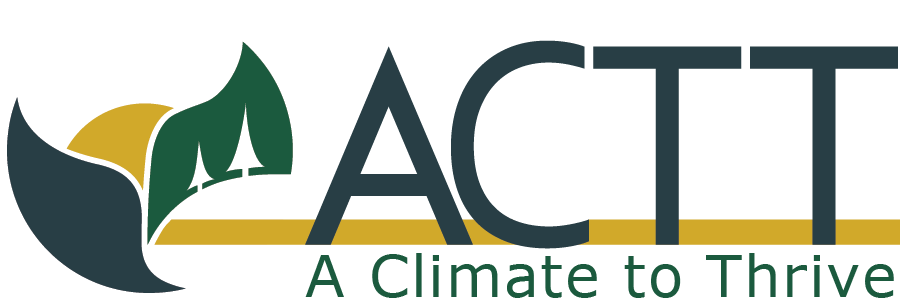Community Over Fear
In October 2020, I read Kim Stanley Robinson’s The Ministry for the Future as I prepared to interview Stan as part of a live webinar hosted by the Jesup Memorial Library. Many reading this newsletter are likely familiar with The Ministry for the Future - the novel was selected by Barak Obama as one of his favorite books of 2020 and was well-reviewed and received. I was reading on a timeframe: the book was released just a few short weeks before the Jesup’s program and is 534 pages in length. For those weeks, I had the book in my hands wherever I went, and the story infiltrated my dreams.
As many know, the book opens with a terrifying heat wave in India, where the “wet bulb” temperature (the lowest temperature to which air can be cooled by the evaporation of water into the air at a constant pressure) rises to a level too high for human life. Tens of millions die. The book goes on to explore, from many different perspectives, how the global community attempts to finally truly address climate change, both the very dramatic impacts being experienced across the globe and the fact that, despite those impacts, fossil fuels are still being burned. The solutions are numerous, widely diverse, and incredibly comprehensive.
I’ve been recommending the book ever since, as it is profoundly instructional. However, this isn’t a book review. I share this here because, this summer, I’ve found myself thinking about The Ministry for the Future often. As heat domes settled over parts of the globe, as wildfires and flash floods destroyed neighborhoods and communities, and as Maine spent a solid month under clouds and fog, I have felt fear rise in people near and far. In some ways, this is good: many people are sitting up and paying attention to climate change.
However, I worry about fear. For some time now, those of us working on climate change have wondered what a global response will look like if that response ultimately comes as a reaction to horrific events. This response will be shaped extensively by fear. How will that change the response? What will be lost that might have been present had we responded from a less reactionary place, with enough focus and calm to consider nuance and be deliberate and comprehensive in solutions?
I’ve found myself speaking in public settings about ACTT’s work a fair bit in recent months. Each time, I’ve framed the work within our driving focus: the opportunity that exists within the need to successfully address climate change. We have directly experienced this opportunity as a pathway to increase community engagement, empowerment, equity, and collaboration. Essentially, our work attempts to answer, over and over again, the question Dr. Ayana Elizabeth Johnson poses so beautifully in her On Being interview (and in her forthcoming book): “What if we get this right?”
The answers are many, and the work involved is as diverse as the answers. For example, we push for distributed, responsibly-sited. and locally owned renewable energy generation and the regulatory and legislative framework that supports this type of generation. Examples of this type of work include municipal solar projects on capped landfills, the cooperative solar ownership model that extends the benefits of solar ownership to low-and-moderate income homeowners and renters, and advocating for the grid upgrades and policy framework needed to support community ownership of solar. When communities can decide how to site and own their energy generation, the benefits are many. (Within the news of co-op solar - the MDI Solar Cooperative is currently exploring initial sites! Join us at our September Community Climate Solutions Fair to learn more about co-op solar!)
Our work on Tremont’s Community Resilience Plan is another example of harnessing the opportunities within climate solutions. As Tremont residents share their hopes for the future alongside their concerns, we get to collectively envision a thriving Tremont and consider how to multisolve intersecting challenges and take advantage of intersecting opportunities. We look forward to sharing the draft of the plan this fall and collecting community feedback.
It takes vision to see the opportunities within climate action. I’ve been so excited to stand by and watch as one of our summer interns, Alexandra Löfgren, has created and led visionary workshops for youth. Every year, as interns join our team, I am reminded anew that my vision is limited and I am inspired by what each intern is able to see, articulate, and create. It’s a profound privilege to collaborate with these intern and I hope you enjoy hearing a bit about their work this summer.
All of this is to say, as I feel fear about climate change understandably rise, including within myself, I fervently hope we continue to open our minds to nuanced, collaborative solutions, not just the most obvious fixes. I hope we continue to listen to the communities impacted and served, and not just the forces that will have the power and funds to swoop in and sell quick-fixes. I hope we do not lose sight of the tremendous opportunity within working to address climate change. May our fear drive us not towards paranoid reactivity but towards conscious involvement and creativity.
Thank you for being part of the ACTT community!
